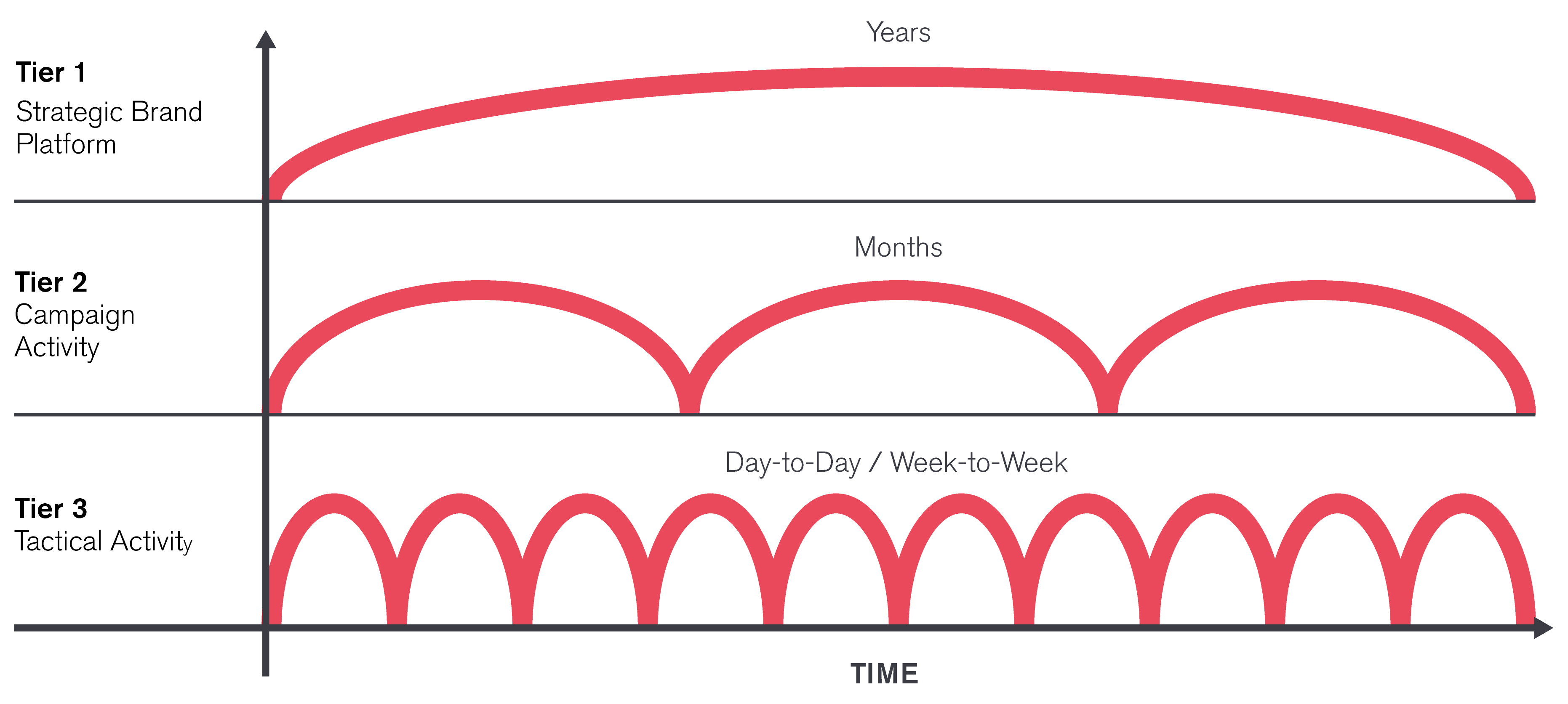It's just exhausting. And uncertain. When is the pandemic "over"? What does "over" look like? It's never going to be over. Or it may all snap back to the way it used to be. We don't know. And in that uncertainty, I find the best way forward is to get back to basics.
The basics. That sounds boring. But the more I'm looking at what do to next, the more I'm looking backwards. The place I'm starting at is looking at how to do some solid Old School Brand Building.
Starting with brand building was kicked off for me when I was looking at many campaigns that launched during the recession in 2008. Julian Cole and friends scoured through campaigns of that recession and their work highlighted to me how brands were looking to cement their position during the downturn. The creative routes taken seem to defy the convention of what "recession campaigns" are.
We've also seen that cost per click rates for online media has dropped in the region of 20-30%. The combination of proper brand planning and cheap media means it's a great time to let people know that you're here.
At Good, we look at three tiers of content, using this lovely graphic below.
In the before times, the focus was based around the campaign activity, trying to build demand around your product or service. Focusing only on that middle tier means that your campaign work is less effective. You may be promoting your product, but it leaves a significant gap in potential customer's frame of reference if they have never heard of your brand.
You can try and brand build and product promote at the same time. It's not a good idea. Your messaging has to become more complicated. It becomes something like:
Try product that you've never heard of, brought to you by company that you've never heard of.
You're dealing with two unknowns, all tied into one message, delivered in a six-second YouTube preroll. It's just too complicated. That's why it's a good idea to introduce the brand first over some time. Time to spend some love on your Tier 1 messaging.
Here's an example of a brand campaign line, exaggerated to make the point:
Company name, leaders in the category that you operate in.
This brand message is all about introducing the brand and attaching it to a category. My very rough example is as blunt as you can make it. Better language, tight creative and robust use of brand assets, all tied around agreed brand values will lift this message. But you get the point.
It's time to promote your service or product. Let's focus on that. Again, from a 100,000-foot view, let's look at the messaging.
Introducing new product or service, a world-class solution, brought to you by recognised brand name.
To caveat again, all this would be finessed by a robust product positioning, significant product assets, a stunning landing page, compelling call to action. You get the idea.
Building the long term brand message and then supplementing it with short, tactical campaigns (the long and short of it, if you will) is proven to be an effective way to spend your budget. The evidence is everywhere, but it isn't widely adopted, with the short being more in favour. Why is this? No matter what they aspire to, some businesses aren't focused on building for the long term. Budgets are set for the year, targets locked in line with that yearly cycle. Brand building though is a long term endeavour, one that enhances the value of your business but does take time to gain traction.
The things to bear in mind as I write this in the Spring of 2020 is that media costs are really low just now. Take advantage of all that unused inventory and look to promote your brand in key digital channels. Talk about your brand at the top level, introduce yourself to new and exciting people.
Getting ready for our post-COVID future is about making sure people are getting to know you now. When better times arrive, you'll be done with the introductions and all set to wow them by focusing on your service or product.
Understand brand is one thing, working in an organisation that takes it seriously is another. In our podcast, The Good Round Up, we chat through what we feel are the signs that you know that brand is taken seriously in your organisations.
